No products in the cart.
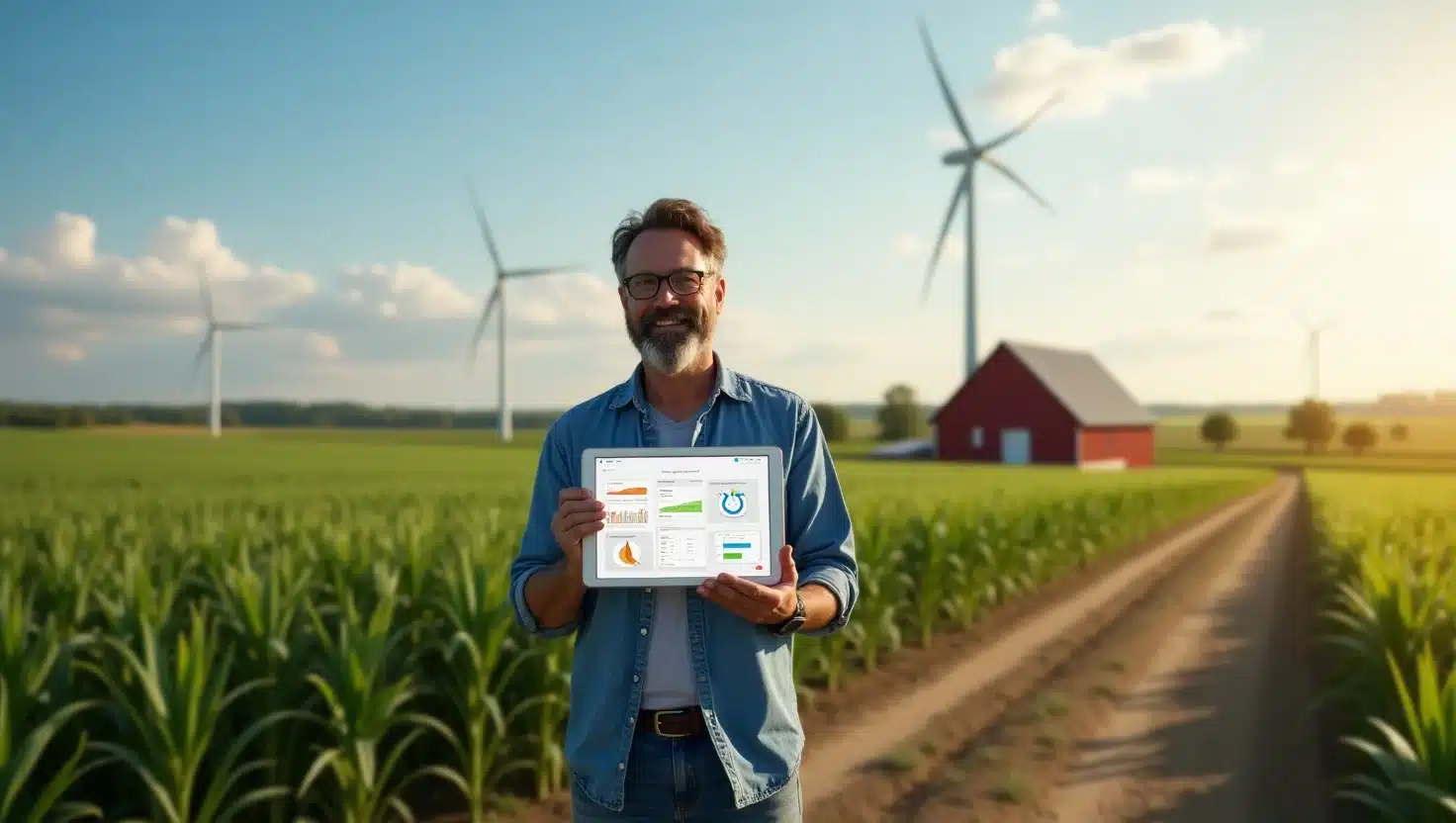
1. Introduction:
For generations, U.S. farmers have relied on intuition and traditional weather forecasts to guide their decisions, from planting schedules to harvest timing. But in an era of increasingly erratic weather patterns, that approach is no longer enough. A sudden heatwave or unseasonal frost can wipe out months of hard work and investment. That’s why more and more farmers are turning to AI-powered weather monitoring systems to stay ahead.
Artificial Intelligence is helping agriculture evolve from reactive to proactive. These smart systems analyze vast amounts of real-time weather data, combining satellite imagery, on-ground sensors, and historical climate patterns to deliver hyperlocal, accurate forecasts. This shift is empowering farmers to make faster, more precise decisions that boost productivity and reduce losses.
Whether it’s predicting droughts, optimizing irrigation, or planning harvests, AI is becoming an essential tool in the smart farming toolbox. And while this technology may seem cutting-edge, it’s already being used by farms across the United States, big and small, to tackle climate uncertainty head-on.
In this article, we’ll explore how U.S. farmers use AI to monitor weather, the tools driving this change, and the measurable benefits it brings to the modern agricultural landscape.
2. Why AI to Monitor Weather Matters in U.S. Agriculture
Weather is one of the most unpredictable and impactful forces in farming. From delayed planting due to unexpected rain to pest outbreaks triggered by humidity changes, weather conditions affect every stage of crop production. In the United States, where agriculture spans diverse climates, weather unpredictability is a constant threat to both large commercial operations and small family farms.
A report from the USDA estimates that over $10 billion in crop losses annually are linked to weather-related events. Traditional weather forecasts, often generalized for regional areas, don’t provide the precision needed for field-level decisions. That’s where AI-driven weather insights come into play.
By integrating AI in agriculture, farmers can now receive forecasts tailored specifically to their farms. These tools factor in localized weather patterns, soil moisture, humidity, and temperature variations, allowing for smarter decisions like when to irrigate, apply fertilizers, or schedule harvesting.
Moreover, AI helps reduce the risk of climate-related crop failure, giving farmers the foresight to adapt. For instance, detecting a drop in temperature early can prevent frost damage by activating protective measures.
Incorporating weather monitoring with AI doesn’t just reduce risk, it boosts efficiency and yield. This technological shift is transforming agriculture into a data-backed, climate-resilient industry prepared to face modern challenges head-on.
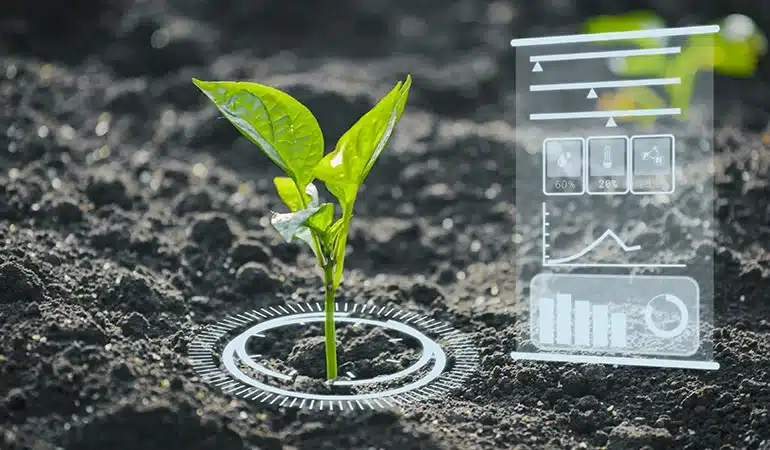
3. How AI Transforms Weather Monitoring for Farmers
Artificial Intelligence is revolutionizing how farmers monitor and respond to weather. Unlike standard forecasts that provide broad regional predictions, AI-powered systems deliver field-level accuracy by processing vast datasets from satellites, on-farm sensors, drones, and historical climate models. This makes weather predictions more precise, timely, and actionable.
One major advancement is real-time weather tracking, which alerts farmers to changing conditions such as rainfall, humidity, wind speed, and temperature fluctuations. Tools like Climate FieldView, Arable, and Taranis use machine learning algorithms to anticipate short- and long-term climate patterns that directly affect crop health and soil conditions.
For instance, AI models can detect early signs of drought stress or frost risk, helping farmers take preventive measures. These systems also enable predictive scheduling, farmers can better plan sowing, irrigation, and pesticide applications based on accurate short-term forecasts. This not only maximizes yields but also helps reduce costs by optimizing resource usage.
Incorporating AI in weather forecasting for agriculture is especially vital in regions experiencing increased climate variability. Whether it’s predicting a dry spell in California or a sudden cold snap in the Midwest, AI provides insights that go far beyond what traditional meteorology offers.
Ultimately, by leveraging smart weather systems, U.S. farmers are gaining an edge in decision-making, improving both sustainability and profitability in an industry that relies heavily on the skies.
4. Case Study – AI-Powered Weather Alerts in Action
Consider a corn farm in Iowa that recently adopted an AI weather monitoring system integrated with IoT field sensors. Before this upgrade, the farmer relied on TV weather reports and gut instinct to decide when to irrigate or apply fertilizers. But unpredictable rainfall often led to either overwatering or missing ideal growth windows.
After implementing an AI-driven platform, using tools like IBM’s Watson Decision Platform for Agriculture, the farm started receiving real-time hyperlocal alerts. One alert warned of an unexpected frost, prompting the farmer to delay planting by 48 hours. That simple shift protected seed viability and saved thousands in potential losses.
In another instance, the system predicted a dry spell two weeks in advance. The farmer adjusted the irrigation schedule and optimized water usage, reducing operational costs and improving yield by 15%. These are not isolated results. Across the U.S., farms using similar AI tools have reported improved forecasting accuracy and better resource efficiency.
This case shows how AI in weather forecasting for agriculture isn’t just theoretical, it’s practical, proven, and already delivering ROI. Small and mid-sized farms are especially benefiting, as cloud-based solutions make high-tech tools more affordable than ever.
These success stories make it clear: AI isn’t replacing farmers, it’s empowering them to make smarter, faster, and more resilient decisions.
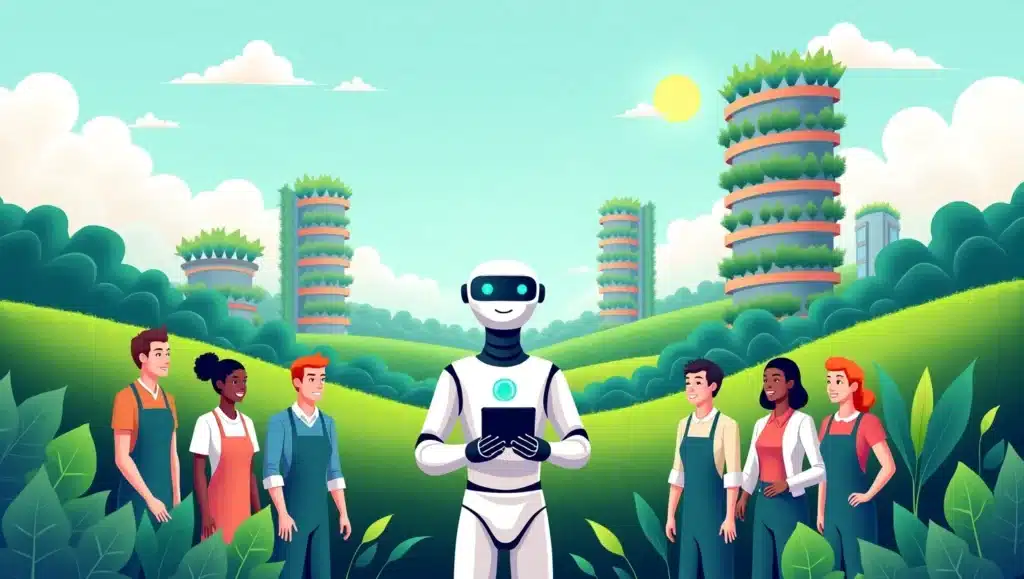
5. Benefits of AI-Based Weather Decision Making
The integration of AI into weather monitoring isn’t just a technological upgrade, it’s a strategic advantage. U.S. farmers who adopt AI-driven weather systems are seeing tangible benefits across the board, from increased efficiency to enhanced sustainability.
One of the key advantages is improved forecasting accuracy. Traditional weather models often miss localized changes that can impact crop health. AI tools, however, use real-time data from the farm itself, like soil sensors and drone imaging, to offer precise insights tailored to each field. This empowers farmers to make data-backed decisions about irrigation, pesticide use, and harvesting times.
Another major benefit is resource optimization. By predicting the best times to water or fertilize, farmers reduce waste and lower costs. For example, AI platforms can recommend delaying irrigation based on upcoming rainfall, saving thousands of gallons of water per season.
AI also enhances risk management. From frost alerts to drought warnings, farmers gain critical lead time to protect their investments. This predictive capability can be the difference between a strong yield and a failed crop.
Additionally, adopting smart weather tools contributes to sustainable agriculture. Efficient resource use means less environmental impact, which is crucial as climate change pressures grow.
By integrating AI in agriculture, especially for weather-related decisions, farmers are turning uncertainty into opportunity, and securing a more resilient future.
6. Challenges and Adoption Barriers
Despite the clear advantages of AI in weather monitoring, many U.S. farmers, especially small and mid-sized operations, face hurdles in adopting this technology. The first major challenge is cost. While cloud-based AI tools are becoming more affordable, the upfront investment in hardware like sensors and compatible systems can be prohibitive.
Another concern is technical literacy. Many farmers lack formal training in digital technologies and may find AI platforms complex to understand and use effectively. This can lead to underutilization of the system’s capabilities or hesitation to adopt it in the first place.
Data privacy and trust also remain significant barriers. Farmers are cautious about sharing sensitive farm data with third-party platforms. There’s often uncertainty about how the data will be stored, used, or potentially monetized without consent.
Infrastructure limitations further complicate adoption. In rural areas, poor internet connectivity can affect real-time data transmission and system performance. Without stable access, AI tools lose their predictive edge.
Lastly, there’s a cultural element, many seasoned farmers are used to relying on intuition and years of experience. Convincing them that AI can enhance (not replace) their decision-making requires education and demonstrated value.
To overcome these challenges, service providers need to focus on training programs, simplified interfaces, and building trust through transparency. With the right support, AI weather tools can become accessible to all, not just tech-savvy or large-scale farmers.
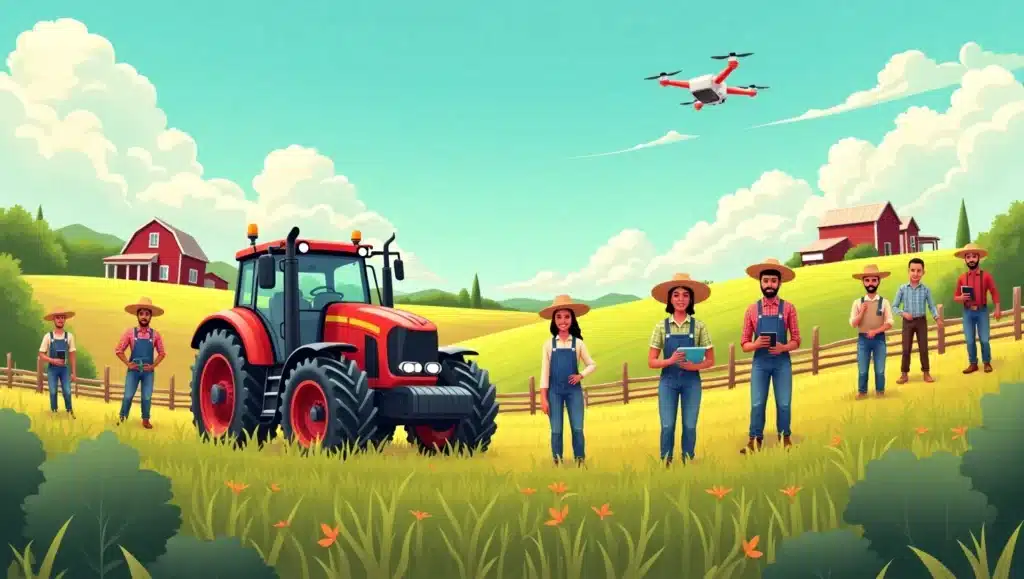
7. The Future of AI in U.S. Farm Weather Management
The future of agriculture is becoming inseparable from technology, and AI-powered weather forecasting is at the heart of this evolution. As machine learning models grow more accurate and real-time data becomes richer, U.S. farmers will gain even more precise insights for planning, risk management, and sustainability.
Emerging innovations like edge computing will allow on-field devices to process data locally, improving speed and reliability in areas with weak internet. This means faster alerts, better decision support, and more autonomous farm operations, even in rural zones.
We’ll also see deeper integration between AI tools and other agricultural systems. For example, autonomous tractors, smart irrigation systems, and satellite imaging platforms will sync with weather AI to form a fully connected farm ecosystem. This kind of precision agriculture will not only reduce waste but also ensure every decision, from seeding to harvesting, is timed for maximum productivity.
Policy support and investment in rural broadband infrastructure will be key to making these technologies accessible nationwide. With growing awareness about climate unpredictability, AI tools will be seen not as luxuries, but as essential farming equipment.
In the next decade, the farms that thrive will be those that embrace AI to adapt to changing weather patterns, improve crop resilience, and feed a growing population with fewer resources.
8. Conclusion & Call to Action
Weather is one of the most unpredictable variables in farming, but with AI-powered tools, U.S. farmers are turning that uncertainty into strategic insight. From real-time alerts and hyperlocal forecasts to predictive planning and resource optimization, AI in agriculture is no longer just a futuristic concept, it’s a daily asset for forward-thinking farmers.
By embracing smart weather systems, farmers are not only protecting their crops but also increasing yields, reducing waste, and ensuring more sustainable operations. The case studies and benefits clearly show that AI is enhancing, not replacing, the role of the farmer.
However, challenges like cost, connectivity, and education remain. Bridging these gaps will require greater industry support, policy initiatives, and accessible training. But the direction is clear: the future of weather-smart farming is already here.
If you’re a farmer, advisor, or agtech enthusiast, now is the time to explore AI tools tailored to your needs. Start small, learn fast, and watch your farm thrive under smarter skies.
Ready to take the next step? Discover AI-based weather platforms, training programs, and affordable packages tailored for U.S. farms. Your smarter harvest starts today.
FAQs:
Q1. How does AI help farmers predict weather more accurately?
AI uses real-time data from satellites, sensors, and historical weather patterns to deliver hyperlocal forecasts. This helps farmers make better decisions about irrigation, fertilization, and harvesting.
Q2. What are the best AI tools for weather monitoring in agriculture?
Popular tools include IBM Watson Decision Platform, Climate FieldView, and Microsoft FarmBeats. These platforms offer features like predictive analytics, soil moisture tracking, and automated alerts.
Q3. Can small farms in the U.S. afford AI weather tools?
Yes, many cloud-based solutions now offer affordable subscription models, and grants or government programs can help cover setup costs for small or mid-sized farms.
Q4. What challenges do farmers face when adopting AI for weather forecasting?
Key challenges include high initial costs, limited internet connectivity in rural areas, lack of digital training, and concerns about data privacy.
Q5. Is AI better than traditional weather forecasting for farming?
AI offers more precision by combining multiple data sources and analyzing patterns at the microclimate level, which makes it generally more accurate than standard forecasts.
Related Articles
Farm Automation
How AI Is Helping Organic Farmers Stay Competitive
1. Introduction: Organic farming has always been admired for its sustainability, purity,...
Farm Automation
AI Farm Assistants: Are Virtual Advisors the Future of Agriculture
1. Introduction: Imagine having a personal farm assistant who never sleeps, analyzes...
Farm Automation
Can AI Replace Manual Labor on U.S. Farms? Here’s What to Know
1. Introduction: Imagine a cornfield in Iowa where machines handle everything from...
Farm Automation
Affordable AI Tools Every U.S. Farmer Can Use in 2025
1. Introduction: Think AI is only for big corporate farms with deep...
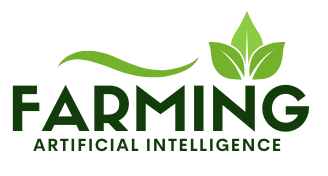
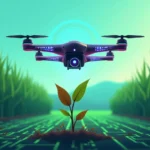
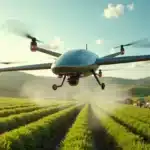
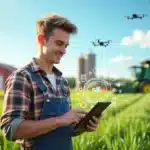

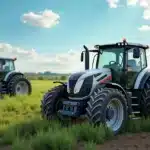


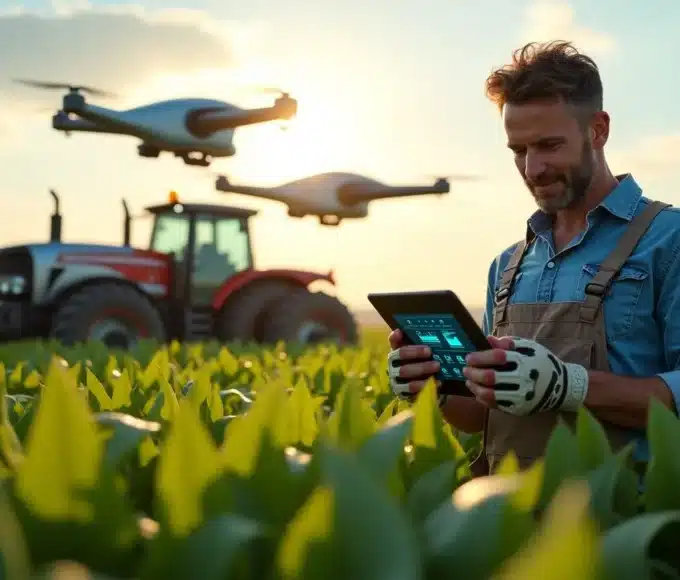
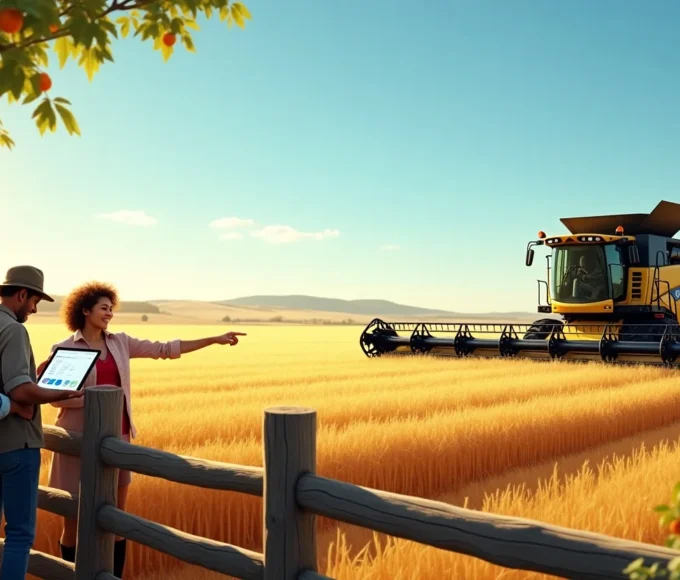

Leave a comment